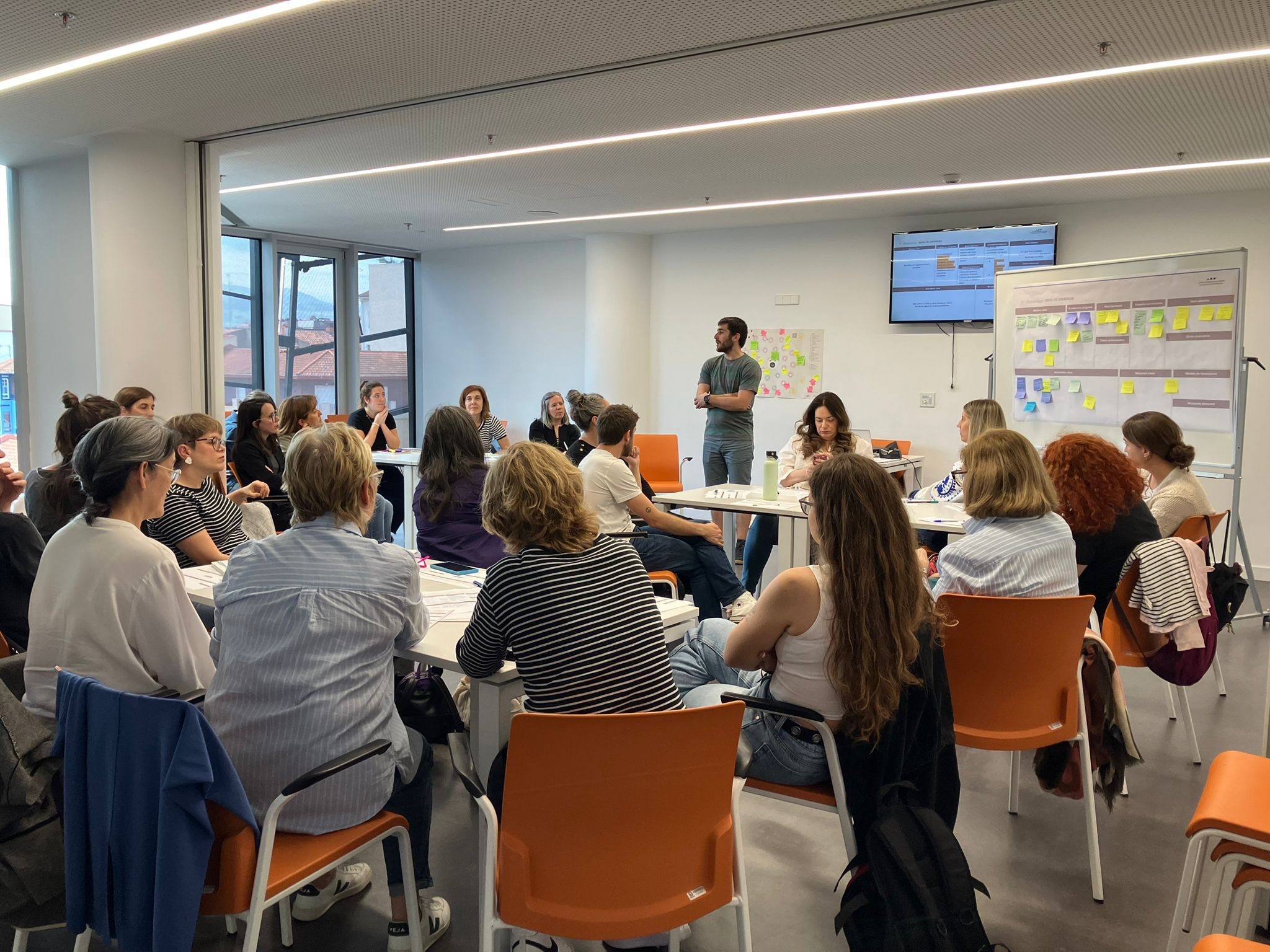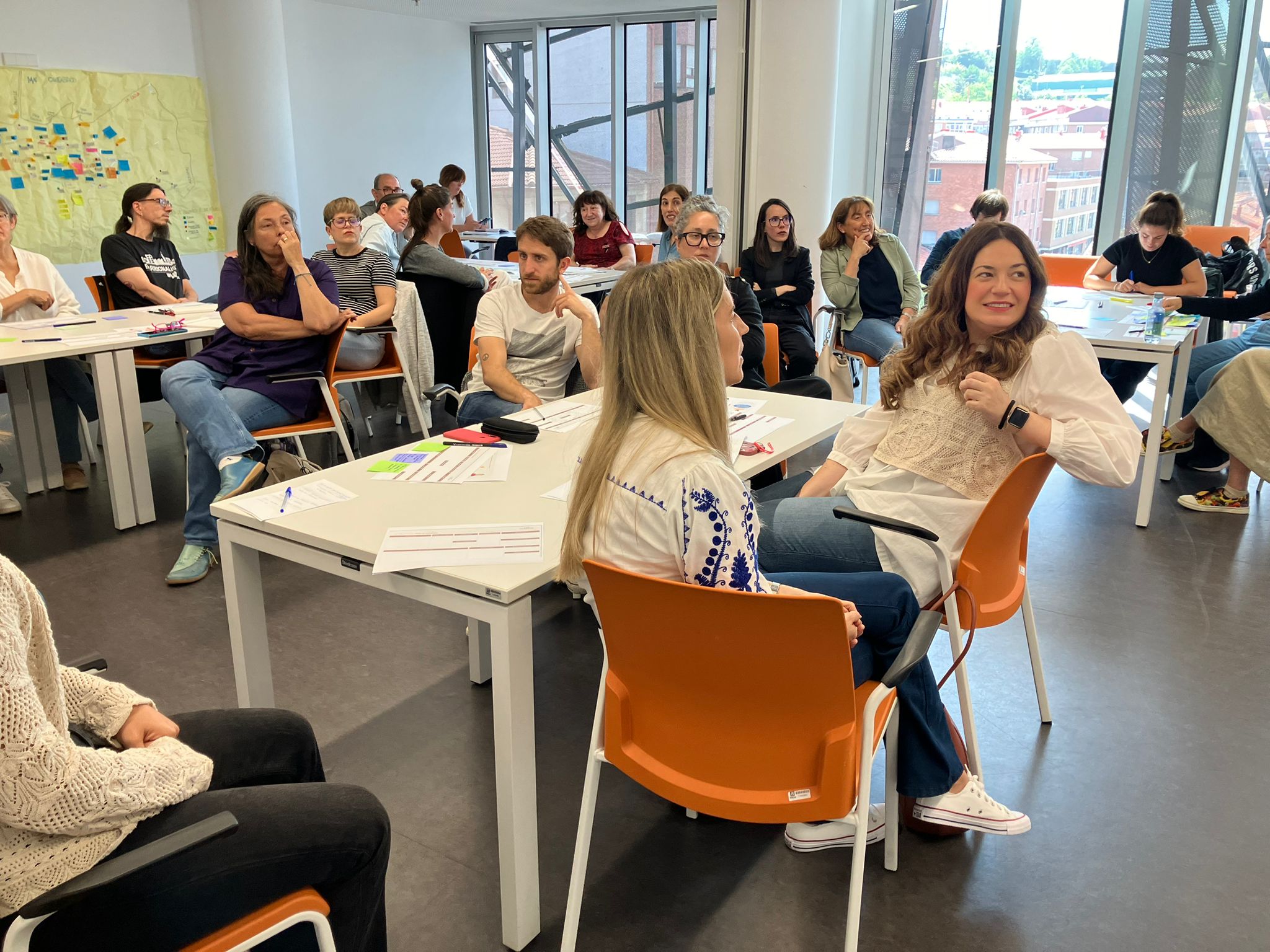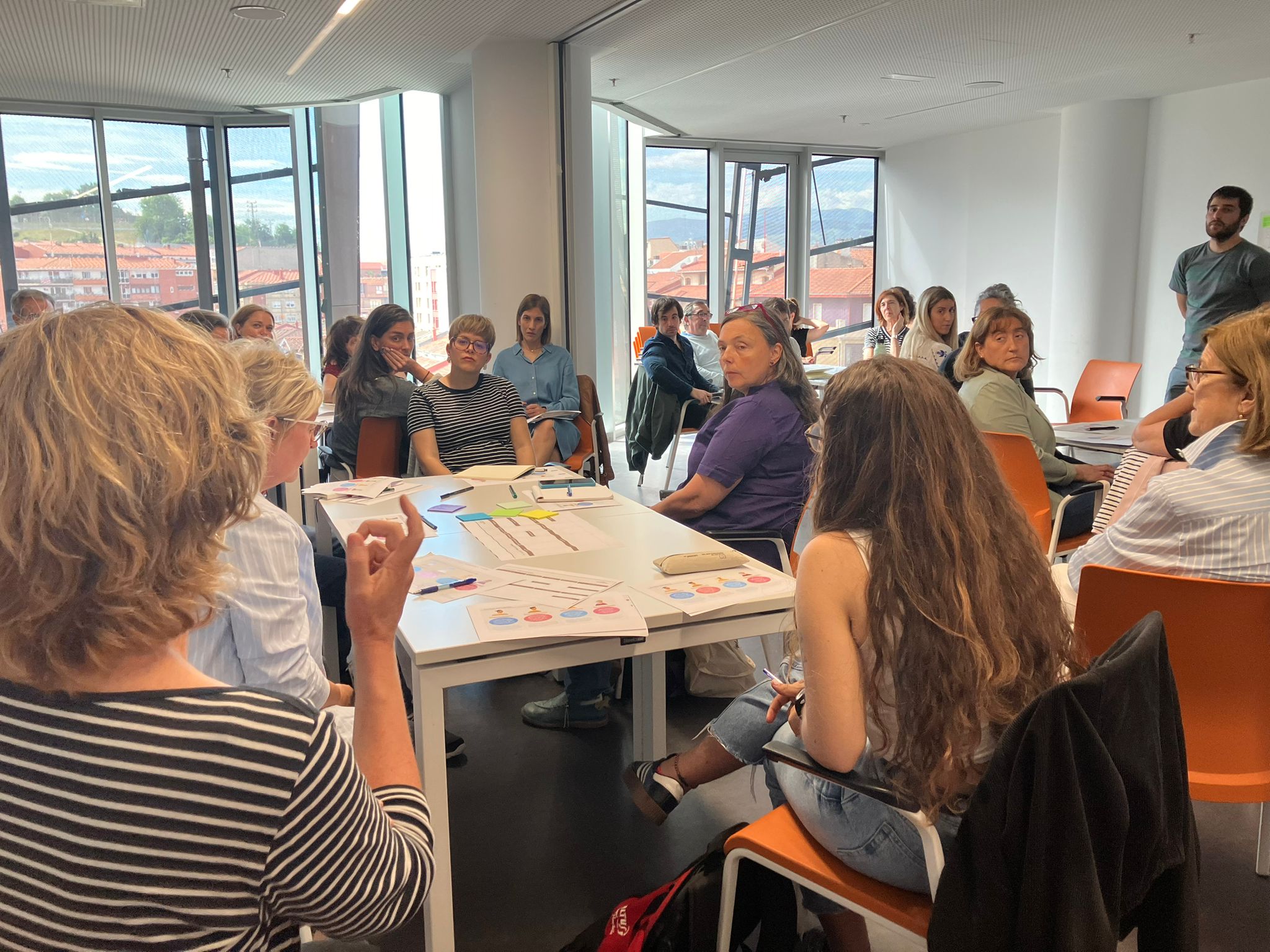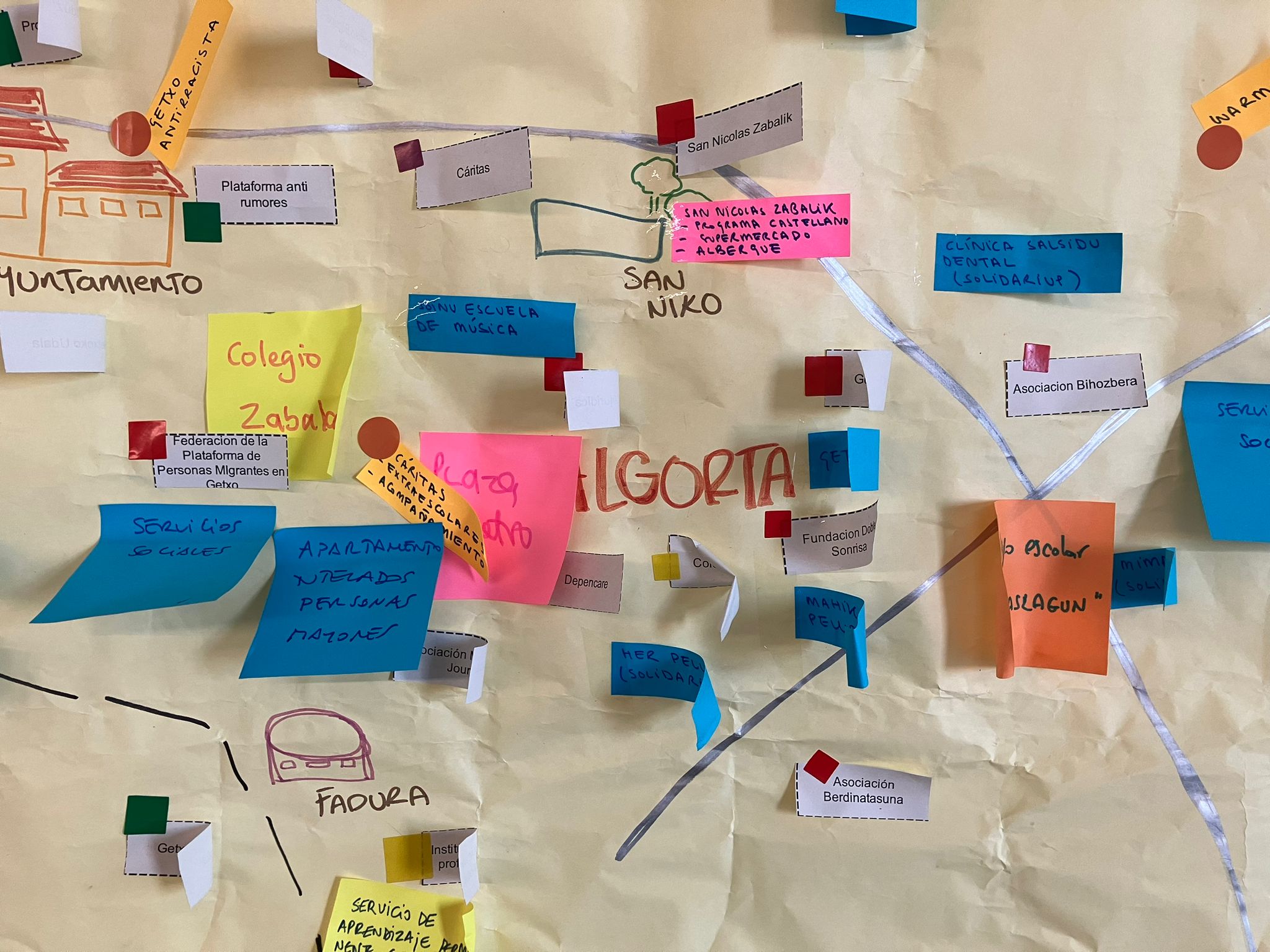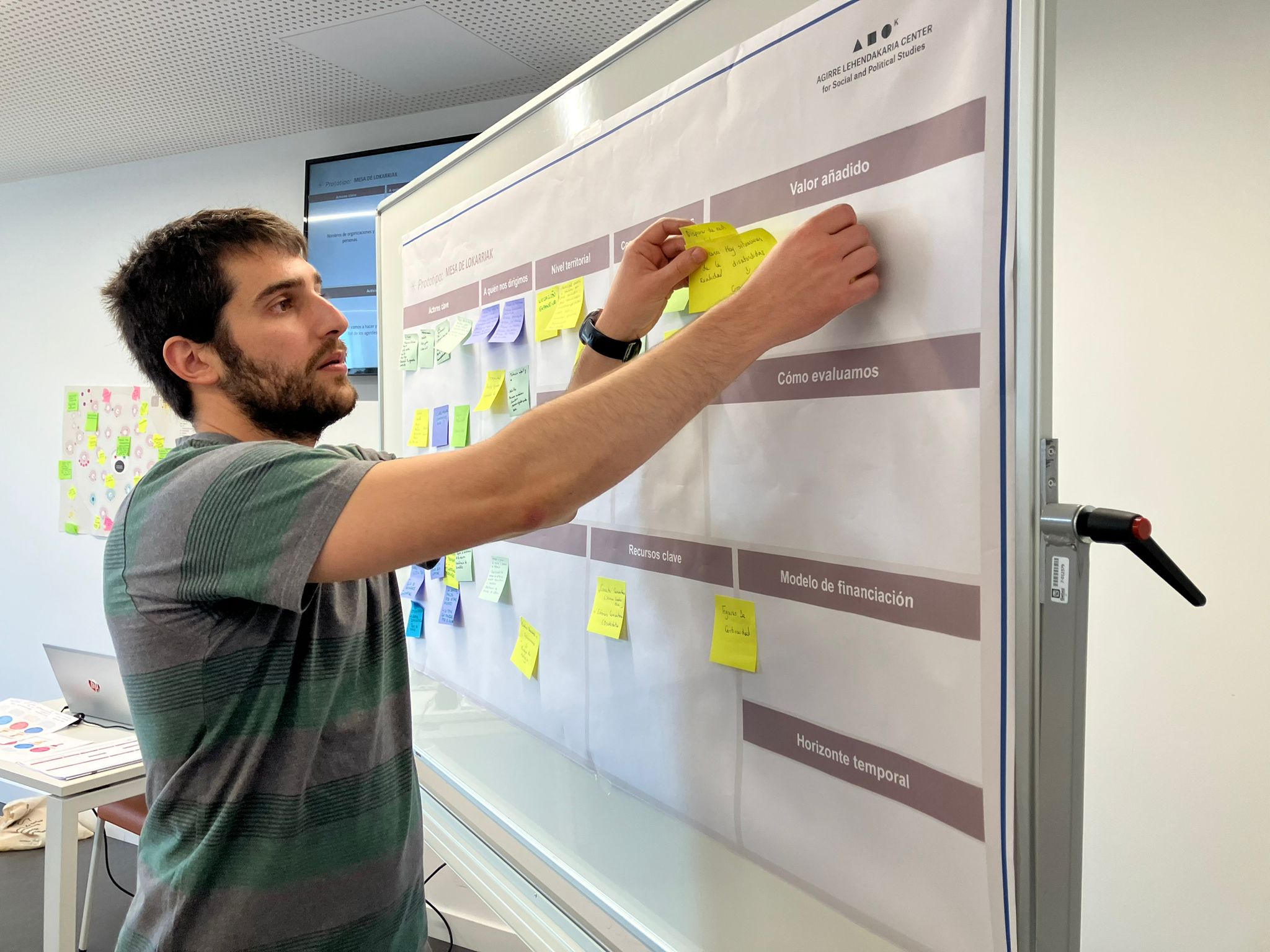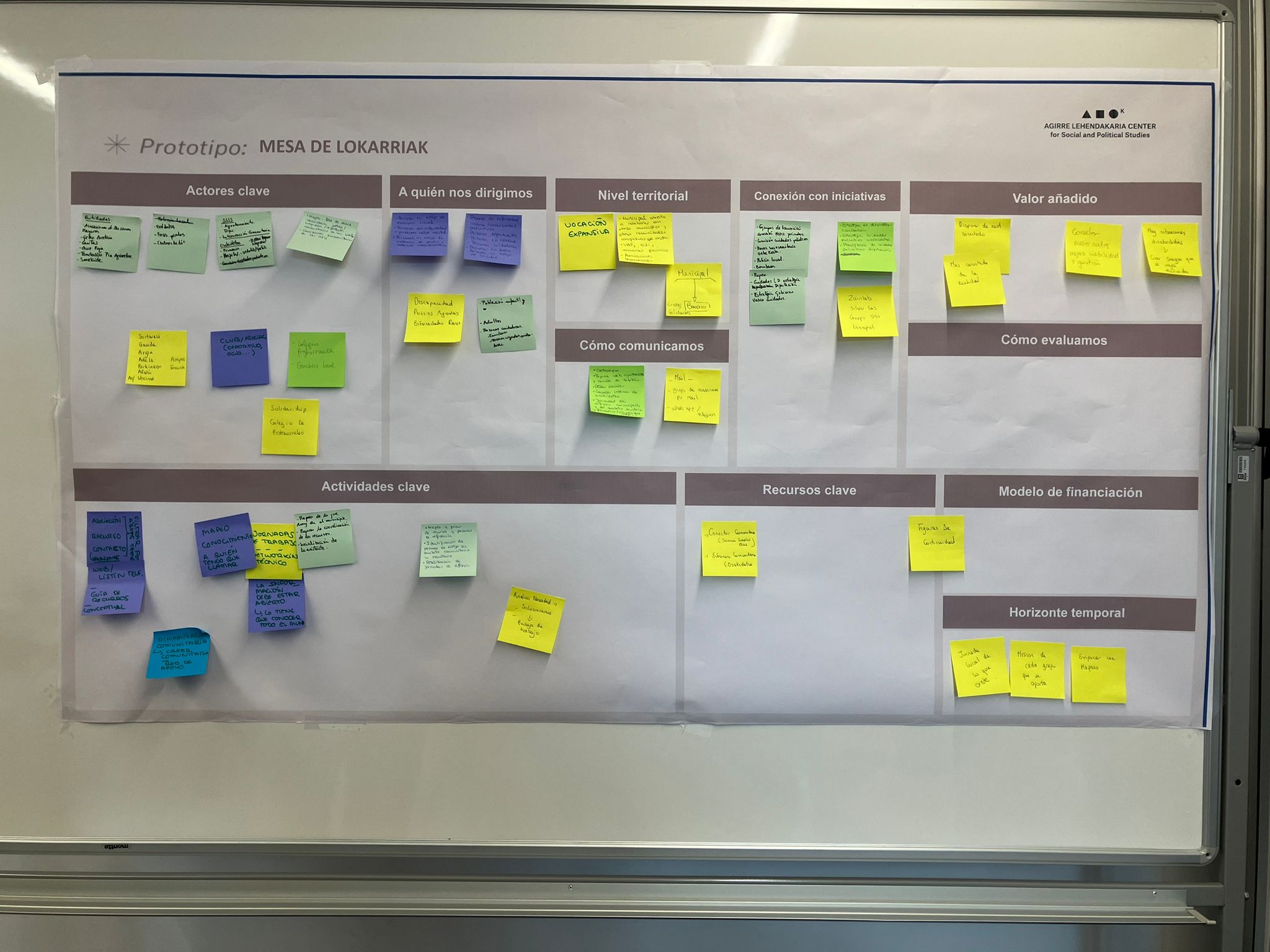Promoting community coordination through the co-creation of the first “lokarriak” table in the Compassionate Community of Getxo

On April 25, 2024, a collective sensemaking took place, to contrast the most significant changes and the portfolio of agents and initiatives of Getxo Zurekin, and the Compassionate Community that has been formed in the municipality through this process. From this session, the need of generating a space and/or tool that allows the coordination of the different agents that participate in the existing resources and/or that are positioned as a gateway between them and the community arised. To this end, Agirre Lehendakaria Center, in collaboration with the Getxo Bihozbera association and Fundación Doble Sonrisa, convened a session on 14 June to address this new opportunity in the articulation of the Compassionate Community of Getxo through the co-creation of a “lokarriak” table.
The session was attended by approximately 30 people, including people involved in the Compassionate Community of Getxo (Fundación Doble Sonrisa, Getxo Zurekin and Getxo Bihozbera), social and health personnel from the area (Romo Kultur Etxea, primary care, community nurses, palliative care units), officials of the Getxo City Council, third sector associations linked to Getxo Zurekin and the Deputy Directorate of Osakidetza.
Most significant changes in perceptions
To contextualize the session, the metanarratives that operate in the ecosystem and that reflect the most significant changes of the Developmental Evaluation process that occurred in the Compassionate Community from 2017 to 2024 were presented.

Although these profiles were already contrasted in depth in the session of April 25, new reflections emerged, such as the importance of networking between the different agents of the Compassionate Community; the need for a mapping and visualization of the different lokarriak figures that exist both in third sector entities and in public institutions; the relevance of the community as a fundamental pillar in care; or the challenge of public health in terms of the agility of care.
Co-creation of the “lokarriak” table
For the second part of the session, the attendees worked at tables with other agents of the ecosystem, for 50 minutes, on a prototype canva, to answer the following questions:
- What are the key actors, institutions and people in the ecosystem.
- Who we are targeting, the specific segments of the population involved in care.
- At what territorial level is it intended to act.
- How we communicate, both internally and externally.
- What are the connections with existing initiatives in the ecosystem.
- What are the key activities and how they are going to be developed, what is the role of the agents in them.
- What are the key resources, both material and human.
- What financing model could the prototype have.
- What is the time horizon for the implementation of the prototype.
- What is the added value of the prototype.
- How we evaluate the prototype.
Subsequently, the groups shared their work, resulting in the following prototype canva:

Closure of the session
The space was perceived as an opportunity to get to know each other, generate networks of trust and work collaboratively for the benefit of the community. In addition, the need to create this kind of spaces on a regular basis and to specify the topics and needs discussed at the meeting was expressed. As a first step, several people suggested starting with a mapping of the existing resources in Getxo, to share it with the rest of the agents.
